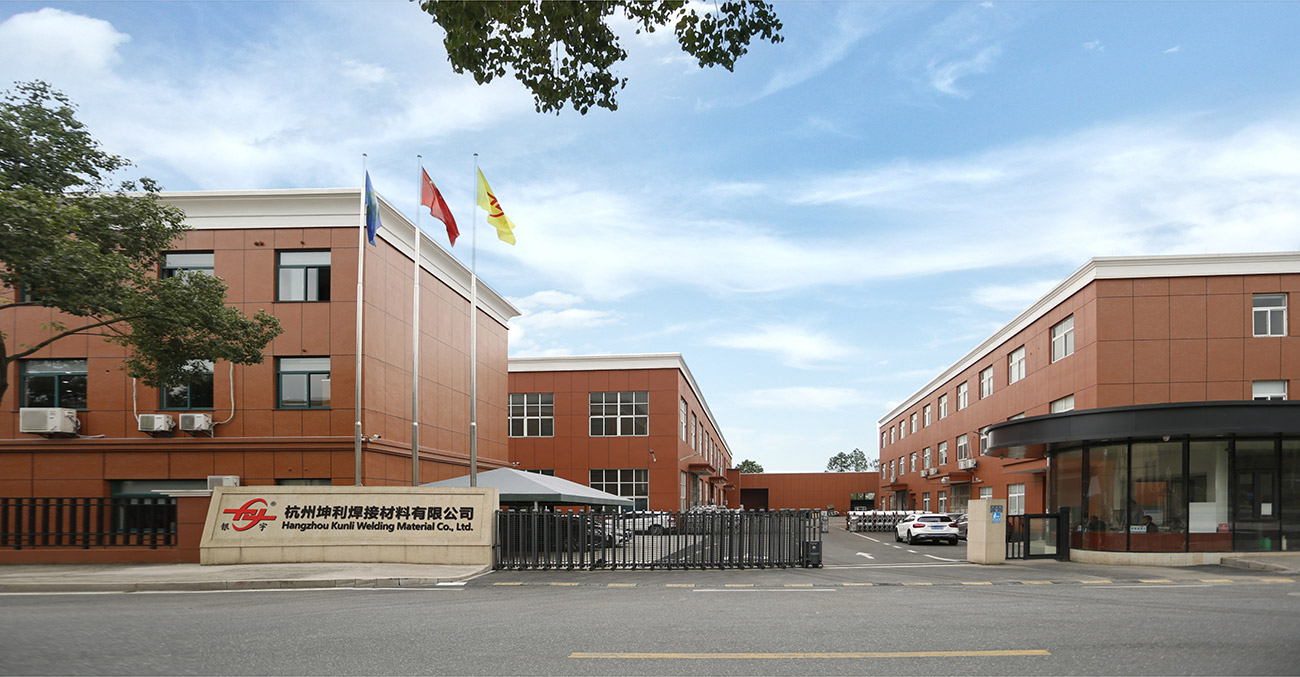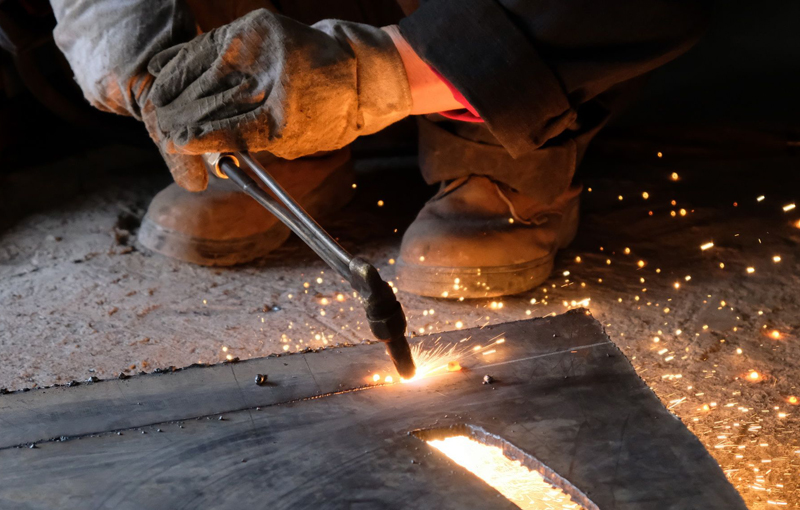Aluminum Welding Wire
ER5554 Aluminum Welding Wire
Mainly apply to automobile wheel, storage tank, tank truck, etc.
Product description
ER5554 Aluminum Welding Wire
Coming From China,
Marketing To The World.

-

30+
USED IN HEAVY INDUSTRY TECHNOLOGY SECTOR
-

35
YEARS OF RESEARCH AND DEVELOPMENT EXPERIENCE
-

200+
COOPERATIVE LARGE-SCALE R & D INSTITUTIONS
-

20+
GLOBAL TRADE COUNTRIES AND REGIONS
Coming From China,
Marketing To The World.
More than 90% of our field operators have professional and technical education background, and have many years of experience in equipment processing and assembly. It is precisely because of this united, dedicated, pioneering, skilled and experienced team that the company's technology and products can be continuously updated and improved.

Send Us a Message?
Related Products
-
 View More
View More
Aluminum Alloy Welding Wire
-
 View More
View More
ER4043 Silicon Aluminum Welding Wire
-
 View More
View More
ER4047 Aluminum Mig Welding Wire
-
 View More
View More
ER5154 Al-Mg Alloy Wire
-
 View More
View More
ER5087 Magnesium Aluminum Welding Wire
-
 View More
View More
ER5183 Aluminum Welding Wire
-
 View More
View More
ER5356 Aluminum Welding Wire
-
 View More
View More
ER5554 Aluminum Welding Wire
-
 View More
View More
ER5556 Aluminum Welding Wire
-
 View More
View More
ER1100 Aluminum Welding Wire
-
 View More
View More
ER5754 Aluminum Welding Wire
-
 View More
View More
ER2319 Aluminum Welding Wire
::: Last News :::
-
How does Aluminum Welding Wire ensure that welded alumi...
May 16, 2024
In the construction industry, Aluminum Welding Wire is often used for welding aluminum doors, windows and curtain walls....
-
How does Aluminum Welding Wire avoid the impact of the ...
May 09, 2024
In the aerospace field, for aluminum parts that have strict requirements for lightweight and high thermal conductivity, ...
-
Gas-metal-arc welding (GMAW) is a common method of weld...
May 02, 2024
How to Weld Aluminum Welding WireAluminum Welding WireGas-metal-arc welding (GMAW) is a common method of welding aluminu...
-
How to ensure high strength of the weld when using Alum...
Apr 25, 2024
In the chemical industry, many equipment and pipelines need to handle corrosive media. When using Aluminum Welding Wire ...
Industry Information Extension
More Information About ER5554 Aluminum Welding Wire
What are the advantages of using ER5554 aluminum welding wire
High Strength: ER5554 aluminum welding wire has a high tensile strength, which means it can withstand a lot of stress without breaking. This makes it ideal for use in applications where strength is critical, such as in the construction of aircraft parts.
Good Corrosion Resistance: ER5554 aluminum welding wire has excellent corrosion resistance, which makes it ideal for use in applications where the welded joint will be exposed to harsh environments, such as in marine environments. This resistance to corrosion helps to extend the lifespan of the welded joint and ensures that it will not fail prematurely.
Low Thermal Expansion: ER5554 aluminum welding wire has a low thermal expansion coefficient, which means it does not expand or contract significantly when exposed to changes in temperature. This is important when welding aluminum alloys, as it helps to prevent warping or distortion of the welded joint.
Good Weldability: ER5554 aluminum welding wire has excellent weldability, which means it is easy to use and produces high-quality welds. This makes it an ideal choice for use in high-stress applications where the quality of the weld is critical.
What are the best practices for using ER5554 aluminum welding wire in aerospace applications
Aluminum alloys are widely used in the aerospace industry due to their excellent strength-to-weight ratio, high thermal conductivity, and resistance to corrosion. However, welding aluminum alloys can be challenging due to their low melting point and high thermal conductivity. To overcome these challenges, many aerospace manufacturers use ER5554 aluminum welding wire, which is an aluminum-magnesium alloy that offers high strength, excellent corrosion resistance, and good weldability.
Choose the right welding process
There are several welding processes that can be used with ER5554 aluminum welding wire, including Gas Tungsten Arc Welding (GTAW) and Gas Metal Arc Welding (GMAW). Both processes are suitable for welding aluminum alloys, but they require different equipment, techniques, and expertise. GTAW is a manual process that requires a skilled operator and provides precise control over the welding arc. GMAW is a semi-automatic process that uses a wire feeder to supply the welding wire to the weld pool. Both processes can produce high-quality welds, but it is important to choose the right process for your specific application.
Use the correct shielding gas
The correct shielding gas is essential for achieving high-quality welds with ER5554 aluminum welding wire. Argon is commonly used as a shielding gas for aluminum welding because it provides excellent arc stability and prevents oxidation of the weld pool. However, for high-stress applications, a mixture of argon and helium can be used to increase the heat input and penetration of the weld. The shielding gas should be chosen based on the specific requirements of the application, and the welding parameters should be adjusted accordingly.
Clean the base metal
Aluminum alloys are highly sensitive to contamination, and even small amounts of dirt, oil, or moisture can negatively impact the quality of the weld. Therefore, it is important to clean the base metal thoroughly before welding. This can be done using a wire brush, sandpaper, or a chemical cleaning solution. The surface should be cleaned immediately before welding to prevent recontamination.
Use the right welding wire diameter
The diameter of the welding wire used with ER5554 aluminum welding wire should be selected based on the thickness of the base metal. A general rule of thumb is to use a welding wire diameter that is equal to or slightly smaller than the thickness of the base metal. Using a wire that is too thick can result in a lack of fusion, while using a wire that is too thin can cause burn-through or excessive spatter.
Control the heat input
Aluminum alloys are highly sensitive to heat, and excessive heat can cause distortion, warping, or cracking of the welded joint. Therefore, it is important to control the heat input during the welding process. This can be done by adjusting the welding parameters, such as the welding current, voltage, and travel speed. The heat input should be kept as low as possible while still achieving adequate penetration and fusion.
 English
English Deutsch
Deutsch
 English
English Deutsch
Deutsch













